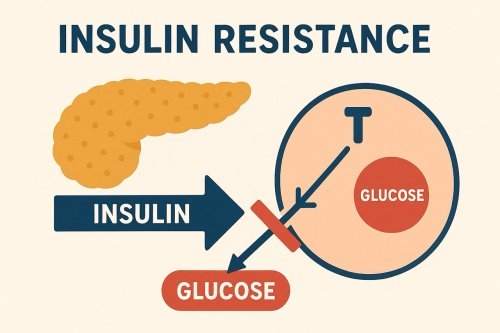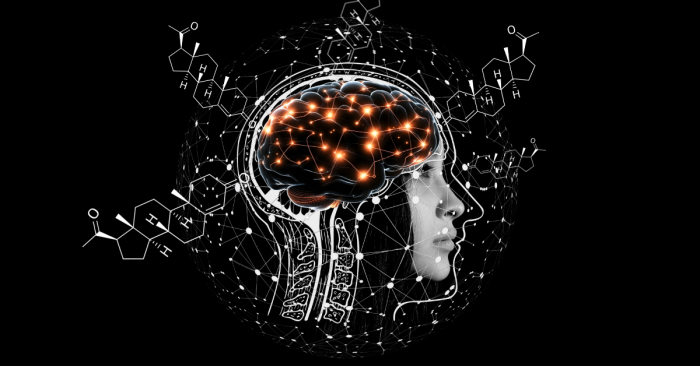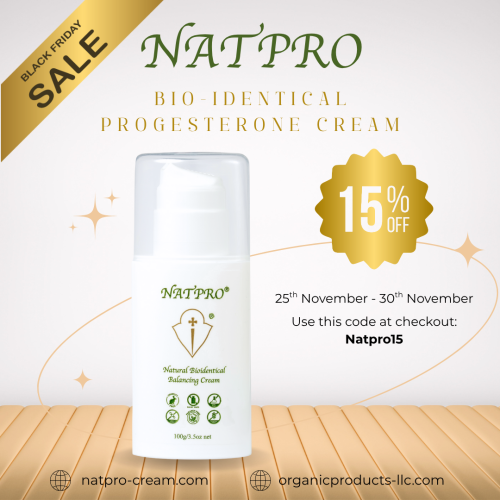Hormone balance
Hormone balance is essential for good health. This page is about the benefits that women of all ages can derive from keeping their hormones balanced through progesterone therapy.
Before further illustration it will be of interest to describe briefly the monthly cycle.
A woman's reproductive life spans about 40 years, from puberty with the onset of menstruation to menopause when it ceases. A woman is born with all the eggs she will ever need - about 300,000. Of the 100 to 300 that develop each month, only one or two become mature, whilst the remainder are re-absorbed by the body.
The cycle is dominated by the two hormones, estrogen and progesterone and hormone balance is essentially all about keeping these two in the right ratios.
During the follicular, or first part of the cycle, estrogen is the dominant hormone. This starts rising after menstruation, reaching a peak just prior to ovulation. Please see this Chart.
Luteinising hormone (LH) begins to rise at about the same time, also reaching a peak just prior to ovulation. LH stimulates the follicle containing an egg to burst open, or to ovulate.
Once ovulation has taken place there is a marked increase in the secretion of progesterone, peaking about 7 days before bleeding. The follicle is now called the corpus luteum, this produces progesterone.
The second part of the cycle is called the luteal phase. This lasts 12-14 days in all women, irrespective of the length of their cycle. A few days before menstruation the level of progesterone starts falling.
Estrogen, which is produced mainly by the ovaries, ensures the development of the breasts and uterus at puberty. After this its role is to build the uterine lining, or endometrium, each month prior to fertilisation as well as to help regulate the menstrual cycle and normalise blood cholesterol levels.
Serum progesterone is normally measured in nanograms (1000th of a milligram) whereas estrogen is measured in picograms (1000th of a nanogram). Saliva tests measure both hormones in picograms. The ratio between the two hormones is critical, to feel well progesterone should be the dominant hormone. To find the ratio divide the progesterone result by the estrogen result, bearing in mind that the results must be in the same measurement. With saliva tests this is easy, but with serum, the estrogen should be divided by 1000 to get to nanograms. If the ratio is over 300:1, better still over 600:1 symptoms abate.
If the hormone balance gets disrupted in any way, and the stresses of our Western way of life - not least our diet - frequently cause this, then a great many adverse symptoms can occur.
Hormone balance = reduced symptoms.
A phenomenon known as "estrogen dominance" happens in many women when hormone balance is impaired. This plays havoc not only with their emotions but creates very unpleasant physical side effects. The reason behind this is the increasing use of chemicals in the world and the widespread use of estrogen in oral contraceptives and in hormone replacement therapy (HRT).
Unfortunately estrogen dominance is something few people know anything about. Most women have been convinced that estrogen is the answer to most female hormonal problems, whether in the form of the contraceptive pill for menstruating women or HRT for menopausal women.
Nothing could be further from the truth.
Fortunately hormone balance is easy to achieve and maintain. How? Simply by withdrawing estrogen and replacing it with progesterone.
The following list gives some of the symptoms of excess estrogen:
- Mastodynia (sore breasts)
- Fibroids
- Endometriosis
- Fibrocystic breast disease
- Increases the risk of hormone sensitive cancers
- Water retention and bloating
- Weight gain
- Loss of energy
- Decreases libido
- Bad temper
- Increases risk of stroke and heart disease
- Causes chronic fatigue
- Causes skin to become thinner
- Incidental in the start of osteoporosis
- Hypertension and heart palpitations
- Headaches/migraines
Confusion also exists between the words progesterone and progestogen or progestin. The former is a natural hormone made by the body, of which there is only one. The latter is synthetic and there are many varieties on the market, each having a molecular structure that differs from that of progesterone. It was discovered that progesterone, when taken orally, is mostly destroyed by the gut and liver. This was an opportunity for the drug companies to make a synthetic which wasn't destroyed. This is now used in Contraceptives and HRT (hormone replacement therapy).
Many medical practitioners have not heard of the benefits of progesterone and the concept of hormone balance. Fortunately, however, a few enlightened medical doctors in the USA, Britain and elsewhere have been using progesterone to treat their patients for a number of years now.
Further positive effects of progesterone are that the immune system is boosted, one's physical and mental energy is increased, and one becomes calmer. Progesterone also protects against toxic substances and acts as a natural diuretic.
Many of the above listed symptoms are those of Pre-Menstrual Syndrome (PMS) and low blood sugar. Up to 60% of menstruating women in the western world suffer from PMS in one form or another. Much research has been done on it. Some has been found to be psychological, some related to food, some to stress and some to problems of hormone balance.
Research has shown that women with PMS consume three times as much sugar as those without. This unfortunately leads to the excretion of magnesium, which is vital in preventing PMS and menopausal symptoms in the first place.
To guide those women with PMS the following list gives some of the common symptoms.
- Headaches
- Migraine
- Epilepsy
- Chronic fatigue
- Insomnia
- Dizziness
- Irritability
- Mood changes
- Depression
- Weeping
- Drug and alcohol abuse
- Attempted suicide
- Fainting spells
- Weight gain
- Tender breasts
- Period pains
- Sinusitis
- Acne
- Dry skin
- Brittle nails
- Asthma
- Backache
- Joint pains
- Diarrhoea
- Constipation
- Cravings and food binges
Menopause, which literally means "last period", usually occurs somewhere between the ages of 45 to 52 with the cessation of egg production. As mentioned earlier a woman is born with all the eggs she will ever need. In the few years prior to menopause ovulation becomes erratic and with it comes a decline in progesterone. At about the same time the ovaries decrease their secretion of estrogen. Maintaining hormone balance becomes increasingly difficult.
Unfortunately with the increased use of petrochemicals and estrogen based drugs, many women are entering their peri-menopausal years in their early thirties.
One final list of symptoms is necessary to help those women who are either in peri-menopause or in menopause...
- Erratic periods
- Hot and cold flushes
- Heavier bleeding
- Night sweats
- Lighter bleeding
- Excessive hair growth
- Mood swings
- Aches in the joints
- Weeping
- Anxiety
- Irrational fear
- Chronic fatigue
- PMS
- Depression
- Digestive disturbances
- Sleeping problems
Progesterone cream is currently being used by thousands of women in the western world to ensure they maintain hormone balance.
The speed with which the cream relieves symptoms varies depending upon both the health problem itself and the quality of the cream being used. Some women find relief within five days, in others it can take three months. Many menstruating women find that they can discontinue using the cream after a few months as their symptoms have cleared up.
To find out more about progesterone therapy in general and how it benefits health issues other than helping maintain hormone balance please click here.
 Feeling tired, foggy, or struggling with stubborn weight gain—especially around the waist? You might be surprised to learn that these symptoms could be linked to insulin resistance, a condition that a…
Feeling tired, foggy, or struggling with stubborn weight gain—especially around the waist? You might be surprised to learn that these symptoms could be linked to insulin resistance, a condition that a… Are you struggling with irregular cycles, unwanted hair growth, or unexplained fatigue? You’re not alone. Polycystic Ovarian Syndrome (PCOS) affects up to 10% of women of reproductive age—and many mor…
Are you struggling with irregular cycles, unwanted hair growth, or unexplained fatigue? You’re not alone. Polycystic Ovarian Syndrome (PCOS) affects up to 10% of women of reproductive age—and many mor… While progesterone is often discussed in relation to reproductive health, emerging research reveals its remarkable role in supporting brain function and protecting against neurological decline. Proges…
While progesterone is often discussed in relation to reproductive health, emerging research reveals its remarkable role in supporting brain function and protecting against neurological decline. Proges… Incase you missed it!
Today is the last day for you to claim 15% off our Natpro 100ml Dispensers. The sale ends at midnight tonight.
How to Claim Your 15% Discount:
•Shop at
Incase you missed it!
Today is the last day for you to claim 15% off our Natpro 100ml Dispensers. The sale ends at midnight tonight.
How to Claim Your 15% Discount:
•Shop at